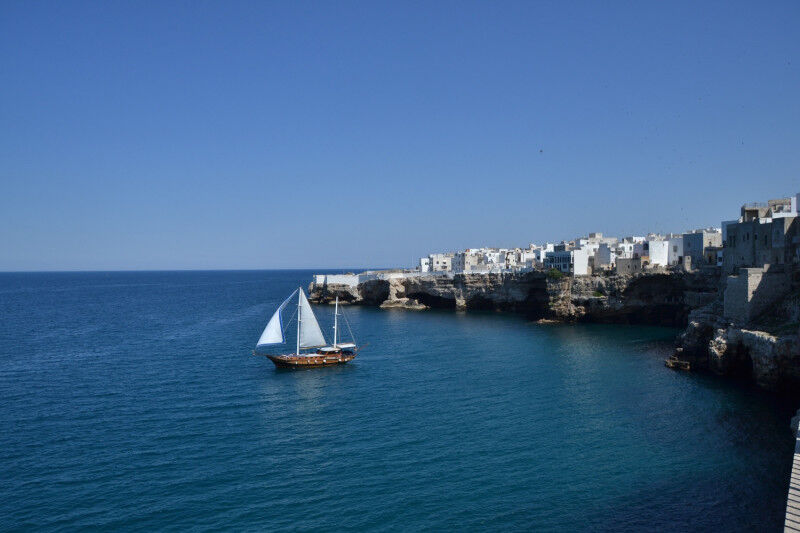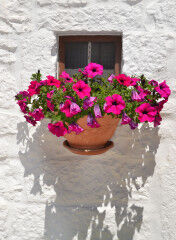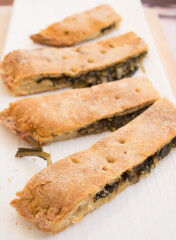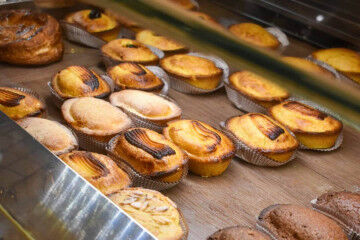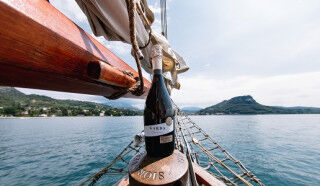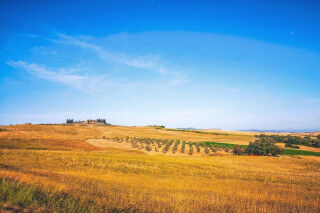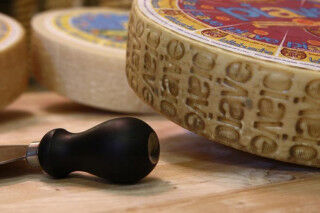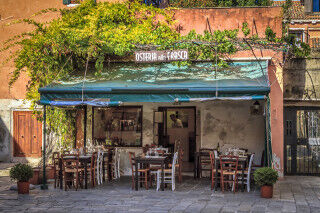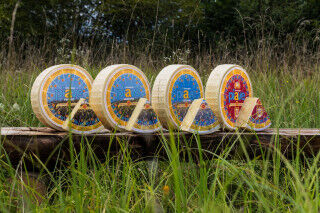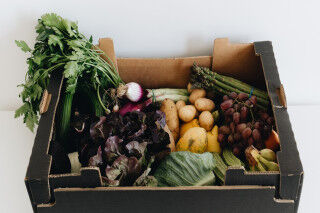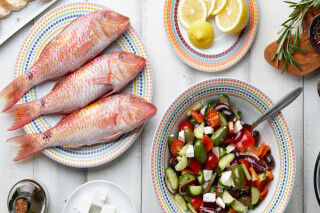A KALEIDOSCOPE OF TRADITIONS, LANDSCAPES AND EMOTIONS
Look at Puglia and….you’re entranced by the fields of ancient olive trees and linear vineyards, by expanses of household vegetable gardens and orchards, by patches of shady majestic oak trees and gnarled trunks of carob trees. How can one not be moved by the sight of dry stone walls stretching alongside the chalky country roads, dotted landscapes with farmhouses and courtyards? The Baroque basilicas and tower-like castles constructed by the Aragonese populaces blend seamlessly into landscapes of Byzantine churches and Roman fortifications. How could we not love this generous land?
Look at Puglia and….everything seems to blend and fade together in a rainbow of lights, and colors, resulting in a bright chromatic mixture of shades and hues.
Look at Apulia and….feel firsthand how the constant presence of the Mediterranean breezes from the Adriatic and Ionian Seas link the territory’s traits and expressions, while allowing them to maintain their distinct individuality.
These elements without a doubt, remain imprinted in your mind after your immersion into the territory of Puglia. The land proves itself a most able, exuberant kaleidoscope of traditions, landscapes and emotions. Here, it’s easy to imagine how art and culture were inspired to created some of the richest pages of Mediterranean history.
Curious about Southern Italy and its fabulous wines? A profile on one of the area’s most exciting wine producers might push you into the travel-planning mode right now! Check out all about the Librandi winery with Calabria and Librandi: the Mediterranean in a bottle.
CULINARY COMPLETENESS
Eating (and drinking) in these parts is more than a need: it is an authentic pleasure, a moment of sociality, of sharing, in an almost pagan rite. Strong flavors and seasoned dishes provide the foundation and reminder of the area’s enviable farm-based raw materials. All in all, the cuisine of Puglia is a beautifully tasty and varied cuisine. The culinary specialties recall the hard countryside lifestyle with its myriad external influences, but also reflects the inherent wisdom of knowledgeable home chefs. Add a dash of flavor from the land’s opulence (extra-virgin olive oil, wines, vegetables, meats, breads, and above all else, fish), and your results will be sumptuous meals honoring the traditional Southern generosity Puglia is famous for.
Let’s kick off with a celebrated classic, the Tiella (rice, potatoes, and mussels), coming straight from the heart of Puglia, the capital city of Bari. We can also nod our heads to chicory, broad beans, chickpeas, and wild greens growing spontaneously around the countryside, waiting to be collected and turned into fresh salads.
Love the combo of chicory and broad beans? We do too - learn how to make a classic Pugliese recipe incorporating both of these local ingredients.
Puglia is renowned for its waste-not, want-not approach to cooking, so it should be no surprise to discover an entire category of dishes made using the “fifth quarter,” or sweetmeats. One such dish are the classic gnummareddi (rollé of lamb or kid innards).
Legendary are the pasta dishes of Puglia, starting with the classic Orecchiette. Fresh pastas around these parts tend to be made with a combination of water, flour, and salt, leaving out the egg entirely. Eggs were often associated with the pastas of richer regions.
Typical cuisine includes a great many vegetable-based soups and stews, and vegetables overall enjoy a place of pride among many a Pugliese home kitchen. Sometimes eaten raw, like fennel, in the place of fruit which was economically beyond reach from many Pugliese households.
Love Orecchiette and want to learn how it’s all done? Check out the recipe for Simple Orecchiette, Orecchiette with Broccoli Rabe, and Orecchiette with Asparagus, Guanciale, and Cherry Tomatoes.
As noted above, the typical cuisine of the Puglia region is strongly marked by the ebbs and flows of shifting populations present in the lands. Thanks to the Germanic Swabian presence, Pugliese cooking can include radishes. Arabs populations left their mark with citrus fruits, juniper, raisins and almonds. Spanish cultures instead spread the cultivation of potatoes and tomatoes in the region, and the omnipresent Octopus stew quite clearly recalls that most classic of Greek dishes.
The culinary culture described above blends beautifully with the area’s natural resources, which are further attended to and enhanced by careful cultivation and maintenance by local producers. As far as the eye can see are acres of graceful olive trees, as Puglia does represent one of Italy’s most productive olive-growing regions. Here the valuable cultivars of Coratina and Ogliarola are masterfully cultivated and curated in order to produce an oil of great structure and even temperament.
PUGLIESE WINES AND THE RISE OF ROSE’ VINTAGES
Primitivo and Negroamaro wines are without a doubt the most omnipresent wine options of the area. These wines are all made from the Nero di Troia, Malvasia nera, Aglianico, Susumaniello, Bombino nero, Aleatico and Ottavianello variety of red grapes.
White wines instead are made exclusively with white or green grapes of the Fiano, Falanghina, Bianco d'Alessano, Bombino bianco, Impigno and Verdeca varieties.
The rise of top-tier quality wines is on the mind of every wine lover, and blended wines are becoming constantly less in demand. Enologically, Puglia is evolving more and more into a wine region “tinged with pink,” affirming with certainly the area’s tremendous vocation for this refreshing wine vintage.
Superb Rosé wines are locally wonderful interpreters of the area’s tremendous viticultural tradition dating back to ancient times. The wines’ freshness, easy-to-drink nature, persistence and excellent food&wine pairing abilities make the Rosé wines of Puglia wines to bet on for their future growth and inclusion into wine lovers’ cellars the world over.
There are already a great selection of large-to-small producers hedging their bets on the Rosé market - some names to watch include: Leone de Castris, Alessandro Bonsegna, Apollonio, Francesco Candido, Tenute Rubino, Paolo Cantele, Polvanera, Agricole Vallone, Giancarlo Ceci, Cupertinum, Palamà, Cosimo Taurino, Attanasio and others.
Want to know another Southern Italian region with a top-level pink wine to select? Have you head of the Masciarelli wine estate’s Cerasuolo d’Abruzzo selection? If not, learn more about Cerasuolo. And don’t forget to check out the other wine varieties as presented by Masciarelli, Montepulciano, Trebbiano, Pecorino, Cerasuolo: Four Wines of Abruzzo.
FISH (ESPECIALLY RAW FISH) AND OTHER CULINARY SPECIALTIES TO WATCH
Least but not last, we come to the world of Puglia’s fish. Turning local need for quick and easy dishes into a virtue, the tradition of eating “raw” fish selections was in play long before sushi gained territory and popularity. You can find a wealth of raw mussels, urchins, oysters, shrimps, croakers, amberjacks - all providing a joy for your palate and senses! Naturally, you’ve got to try it to believe it.
Street food options abound as well: local neighbourhood butcher shops with outside grills in Cisternino, Martina Franca or Locorotondo, coastal shacks selling fresh mussel along the seaside, tempting bakeries in Bari and Altamura, countless small shops specialized in pucce (typical Pugliese bread shaped like Pita bread), deep-fried Calzone and rustici sandwiches in Salento. A tempting array, to be sure.
We all want to eat healthier, so learn about how sustainable fishing is making it possible to lighten up our menus and carry aquaculture into the next decades, thanks to Staying Afloat With Modern Sustainable Fishing.
And to wrap it up on a sweet note, let’s check out the dessert specialties of the area. While Puglia doesn’t have a wide array of sweets to explore thanks to the tradition of focusing on the savory side of each meal, a few sweets stand out. Try cartellate, a mixture of flour, oil, and wine. We also can test out a selection of almond-based sweets, and Maglio-area chocolates, as well as the infamous sporcamusi, a pastry puff filled with custard and powdered sugar. Last but but not least, don’t skip the delicious pasticciotti leccesi, a crunchy pastry shell filled with fresh custard cream. Yum!
If it’s sweets you’re after, we’ve got some desserts perfect for a quick summer evening. Check out our suggestions and find the perfect dessert recipe for tonight’s meal!
That should get you started, but be sure to sign up below for delicious Italian recipes, wine news, and tips in the Mamablip newsletter. A quick sign-up and you'll get these details delivered right to your inbox once a week - could living like an Italiano be any easier?
